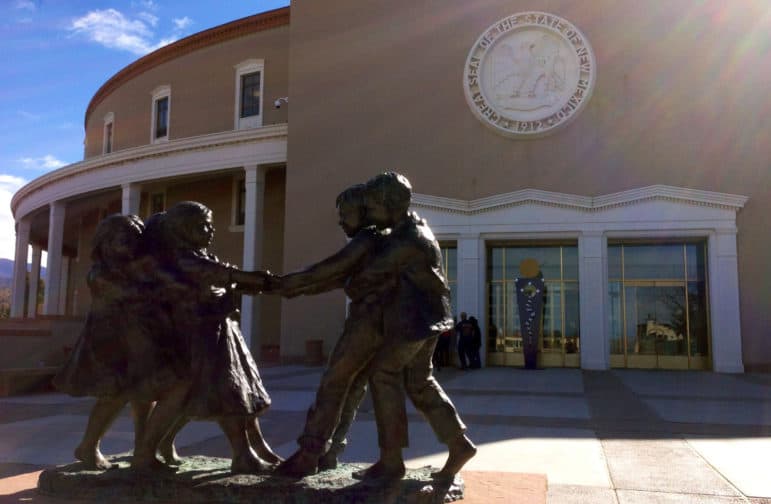
Heath Haussamen / NMPolitics.net
New Mexico is the only state in which elected officials take the public infrastructure budget and divide it up according to a political formula.
Bureaucrats call it “capital outlay,” while critics call it pork. But whatever you call it, New Mexico’s process for handling public works projects has been panned for years by some government experts inside and outside the state. It has attracted national attention — and ridicule.
Former Gov. Bill Richardson tried and failed to reform the system. And Gov. Susana Martinez has called reforming the capital outlay system a critical, high-priority issue and an area that is “desperately in need of reform.”
The Santa Fe-based think tank Think New Mexico has made fixing the system a priority and is backing bill designed to take the wheeling and dealing among legislators out of the process by creating an independent commission to “analyze statewide infrastructure needs and direct the dollars to priority projects.”
But some worry that the bill, House Bill 307, could have come too late to get through the labyrinth of the legislative committee process. The measure wasn’t introduced until Wednesday and has yet to be heard by any committee. And the current session of the Legislature ends in less than two weeks.
The bill’s sponsor, Rep. Zach Cook, R-Ruidoso, told The New Mexican on Friday, “As long as I’ve been here, I’ve never been happy about the capital outlay process. I’ve always taken a little bit of money home, and I’ve been able to sprinkle it around a little bit. But I don’t like the way we do it, and I’d like to get a more efficient and effective way to do capital outlay.”
But Cook said, “The reality is it was introduced late in the session. The feedback I’ve gotten is that a lot of people are interested in that concept of reforming capital outlay. … But we’re also racing the clock. I haven’t given up on the clock. I’m going to push it as much as I can against the clock.”
Fred Nathan, executive director of Think New Mexico, said Friday he expects the bill to be heard Monday by the House Government, Elections and Indian Affairs Committee.
There is resistance from some lawmakers to the proposal.
Sen. Daniel Ivey-Soto, D-Albuquerque, told a reporter Friday that he doesn’t think the bill will pass because it’s something being “imposed from outside.” More legislators should have been consulted, Ivey-Soto said. “I don’t mind giving up power,” he said. But he believes any reform of the system should come from within the Legislature.
New Mexico is the only state in which elected officials take the public infrastructure budget and divide it up according to a political formula.
Each of the 70 House members gets a certain amount of capital outlay money to spend, based on the money available in a given year. Each of the state’s 42 senators gets a slightly higher amount. The governor also gets a large portion of the available money for capital construction.
“One of the many problems with the current system is that too much public infrastructure money sits idle on the sidelines because there is little to no planning or vetting of projects,” Nathan said in an email Friday.
He cited a report from the Legislative Finance Committee last month that said more than $1 billion in capital outlay spending was unspent at the end of last September — including more than $600 million for appropriations made as long as six years ago.
Another problem with the current system, Nathan said, is that “In many cases, a lobbyist can get a project into the Christmas tree bill simply by asking a friendly legislator, and there is no public scrutiny. HB 307 makes the process transparent and gives the public a chance to have a voice in how their tax dollars are allocated.”
According to the report, $785 million of the $1.3 billion approved for 229 large projects — those funded for $1 million or more — is outstanding.
“If that money were being spent on public infrastructure projects, it would create 27,000 jobs at a time when New Mexico is first in unemployment and 50th in job growth,” the report said.
A Governing magazine article in 2005 said, “Capital planning is a virtual oxymoron in New Mexico.”
Think New Mexico last year published a report on the issue that quoted Michael Pagano, a professor of public administration at the University of Illinois, saying that New Mexico’s system “would be the illustration about how not to do capital improvement planning.”
Contact Steve Terrell at sterrell@sfnewmexican.com. Read his political blog at tinyurl.com/Roundhouseroundup.